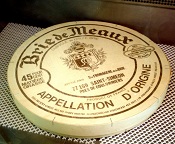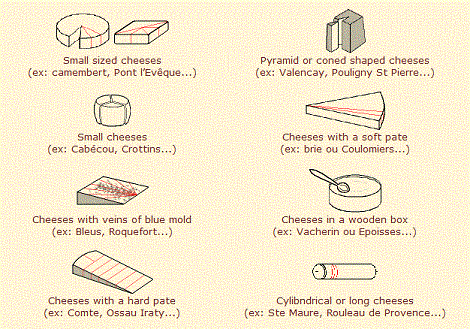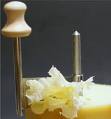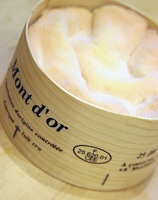 France's food culture is one of the most celebrated in the world, but the rules that surround it are not always easy to comprehend. As an expat living in Paris I've learned the hard way that there are a myriad of French customs related to food that can surprise you when you least expect it.
France's food culture is one of the most celebrated in the world, but the rules that surround it are not always easy to comprehend. As an expat living in Paris I've learned the hard way that there are a myriad of French customs related to food that can surprise you when you least expect it.
Once, relatively early on in my Paris life, I was invited to a party at the home of a colleague from Christie's France. It was a large event, planned as a cocktail dinatoire. The type of party a caterer would likely call "cocktail/heavy hors d'oeuvres."
It was held in a beautiful and elegantly furnished apartment in the 16th not far from the Bois de Boulogne. I arrived a bit late, as I had already learned my lesson to not arrive on time. See previous post Once arrived, things were going well. I knew a number of people and those I didn't were welcoming and friendly.
There was an abundance of food on offer. In addition to passed petits-fours salés (Hors d'Oeuvres) there was a big buffet laid out in the dining room. At a certain point in the evening the table was cleared to start cheese and dessert. As you may already now, I love cheese and despite still being a newby in France (this was 2002) I thought I'd learned quite a bit about cheese.
The cheese and desserts had drawn a number of people and several were around me as I started to serve myself from the selection of cheeses. Well, my knife had barely touched the first piece of cheese, a runny ripe Brie de Meaux, when I heard a sound I have learned to dread: the sound of a deep nasal inhalation. I call it "the sniff." I looked towards the source of this sound and saw my friend Isabelle simultaneously shaking her head and gently clicking her tongue. I don't know if you can imagine this combination of sight and sound, but if we ever meet I'd be happy to demonstrate so you know what to look out for.
I had already learned that "the sniff" was a polite indication of a social faux-pas in the making. The tongue-clicking and head-shaking is a more emphatic and familial version ...something parents reserve for their children. Since she knew me, she could do both. Otherwise, she would have only done "the sniff." The direction of my knife made it clear to those around me that I was about to make a big mistake. You see, I was about to "cut off the nose" of this beautiful Brie de Meaux. Meaning that I intended to cut the point off the wedge-shaped piece of Brie. You might think that this seems like a reasonable approach, hardly worthy of "the sniff," but the French have a different and perhaps even logical view.
When savoring a really nice piece of French cheese, there are several factors that make up the flavor. I have already talked about the importance of eating cheese at its seasonal peak and other factors that can influence the taste. See previous post. Having selected the perfect cheese, when you begin eating there are several key components that make a perfect bite. These are the outer skin or "croûte," the interior "pâte," and any mold occurring on the surface or in interior veins. Each of these components adds its own small part to the overall flavor and the idea is that everyone should have an equal amount of each flavor component. For example, the closer you get to the outer crust, the stronger the flavor. Another unlikely factor can be the crunch, the extra-vieux Mimolette is best eaten when its more than two years old and the crust has been invested with cheese mites. (Hard to imagine who thought of that one.) It's very dry and usually served in small cubes or crumbled.
In my case, with the Brie de Meaux, cutting off the nose, as I was barbarically about to do, would deprive the other guests of their perfect bite. Thanks to Isabelle, my faux-pas was averted. I took her cue and stopped in the nick of time. She made a gesture that indicated I should cut down the side of the wedge, thus allowing everyone a similar piece. What I have later learned is that every shape of cheese has its own rules for how it should be cut.
Basic Guidelines for Cutting French Cheeses

Some varieties, like the Swiss Tête de Moine even have their own tools designed expressly for making the perfect bite. 
In recent years I've learned that the French love to break the rules. Especially the rules that are begging to be broken. However, what I've noticed is that when people break the rules about cutting cheese they often first make it known they realize they are breaking the rules; often using the assumptive phrase, "you don't mind if I cut the nose." So even though they are breaking the rules they don't want you to think they don't know their way around a cheese plate.
 Sunday, January 2, 2011 at 7:23AM
Sunday, January 2, 2011 at 7:23AM  At the start of a new year, it's always good to reflect on the past year.
At the start of a new year, it's always good to reflect on the past year. Cheese,
Cheese,  French life,
French life,  Paris Restaurants in
Paris Restaurants in  French Culture,
French Culture,  Practical Paris
Practical Paris 




